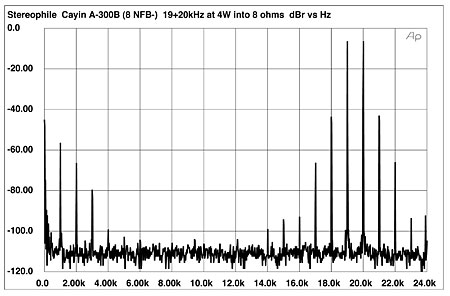There is a lot of literature describing ultrasonic hearing via bone conduction, etc.
There isn't much data to support it though. Like I said, getting published doesn't make a paper right, having it reproduced and supported by additional research [eventually] does. The press is especially bad at getting this part.
These effects can certainly be an integral part of the sensory experience of listening to a live instrument.
I don't think 'certainly' is the right word here. There are plenty of things about a live performance that a recording can't capture; the ambiance, the context, the mood, the setting.... but these have little to do with the sound.
I remember as a kid I loved the sound of the cello and double-bass and wanted rather badly to learn how to play (and could afford no such thing, so instead I became a singer--- no expensive instrument involved, and I could get lessons in public schools). Eventually, a friend let me play a few notes with coaching on his bass... and I was terribly disappointed that it felt nothing like I expected. The warm, earth-shaking depth that seemed to be there just a few feet away wasn't there when I held the instrument in my own hands. It was there for the audience, not the player. To say that was a great disappointment is putting it mildly.
Some years ago, I decided I needed to pick up an instrument before I turned thirty or I never would. I still had the wonderful resonance of the double bass in mind when a friend in a pit introduced me to the first bassoon player. He pulled out a fresh reed for soaking, gave me a few tips on how to force out the merest note, I worked on getting the naked reed to voice, we put the reed on the bocal, he gave me the fingering for a B flat... and told me to give it a go. A bassoon may sound like a farting duck to to audience but the all the depth the bass lacked was there in my hands. I felt like I was holding a running diesel engine in my bare hands.
I don't think the vast majority of recordings do the bassoon any justice. But it's not the imperfection of the equipment, it's that the recording lacks everything but the sound, no matter how perfect the sound is. More bits and higher frequencies don't replace the feeling of an truck engine tucked under your arm (or that one more fff whole note and your embrochure is done for, and the oboes will never let you hear the end of it).
In a simple standard auditory test-tone audiometry world, ultrasonic frequencies have no place in human hearing.
Lee
But who says tests concern only tones? Tones have a prominent role in testing only due to the fact they're easy to handle and make many tests possible that otherwise wouldn't be. Testing does not and never has relied only on tones (or noise, or synthetic signals). The 24/192 vs 16/44 tests I linked in the article didn't use synthetic audio.
However, in a more completely-encompassing view of auditory perception, both sub and ultrasonics play an important role in how we perceive sounds around us.
Sub: yes. No one argues about this, because they do matter, and there's something actually perceptible there for tests to verify.
Ultrasonics, I do not concur. They have nothing audible [or otherwise perceptible] to contribute. Moreso, it is easy to convince me otherwise... Construct a reproducible test that demonstrates their contribution. There have been quite a few attempts to do this, none have suceeded so far.
Monty
Xiph.Org







